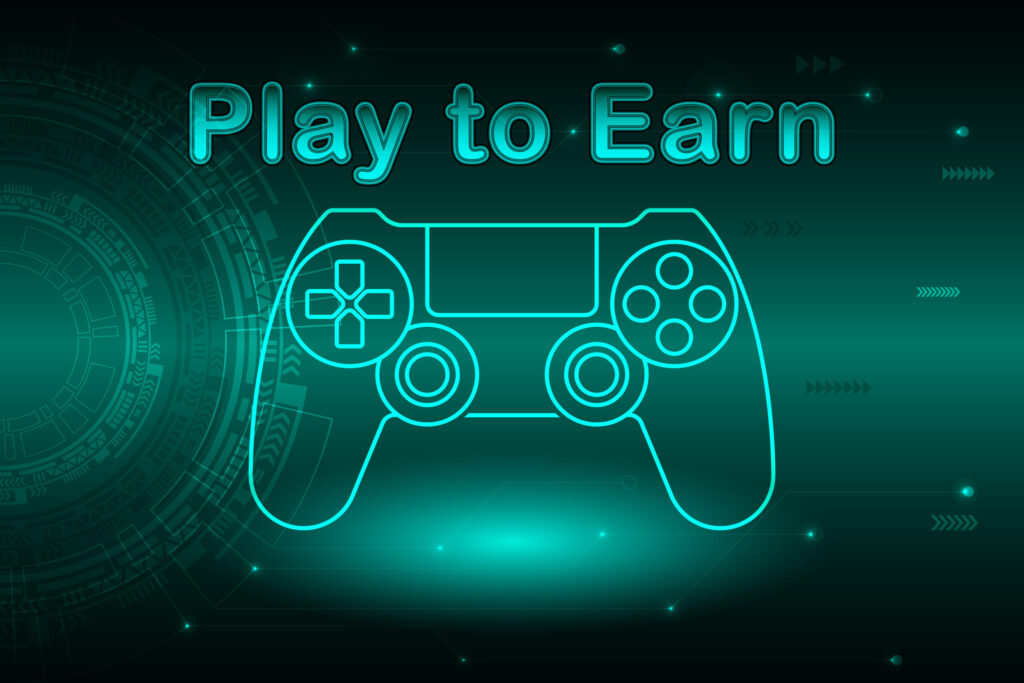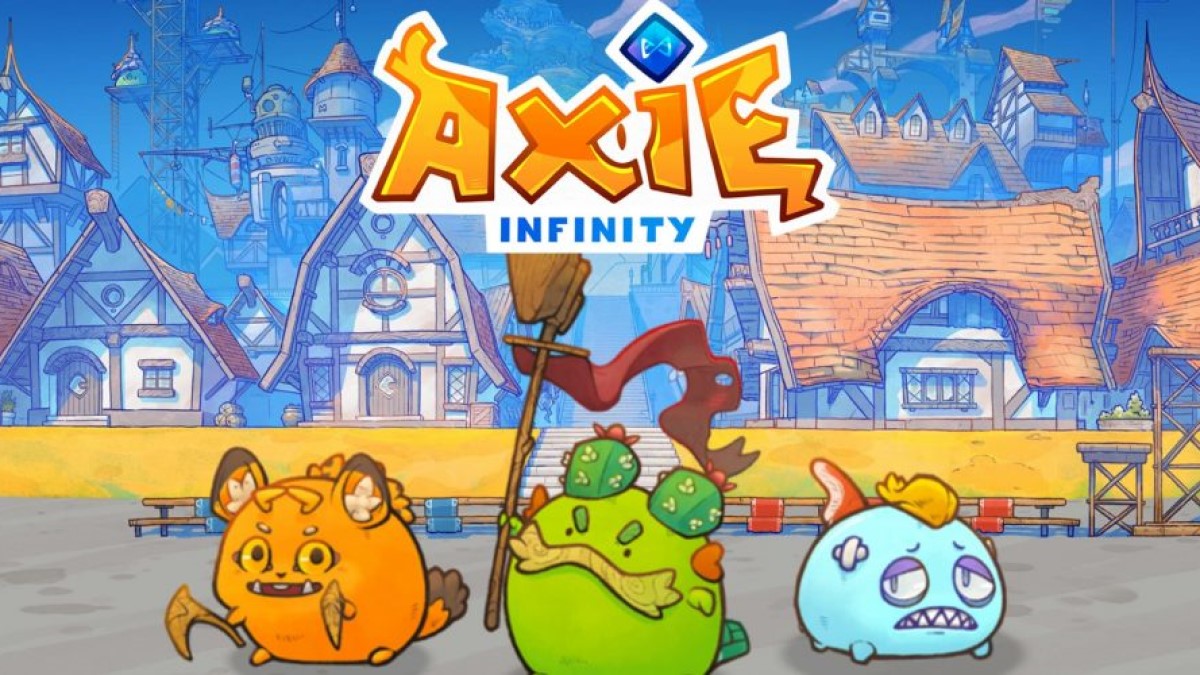Axie Infinity, once hailed as the first true NFT gaming giant, made waves across the gaming and cryptocurrency industries. It offered a new type of gameplay model—Play-to-Earn (P2E)—that blurred the lines between entertainment and real-world economics. This game wasn’t just about collecting cute creatures or battling them in virtual arenas; it was about earning real-world value through playing, and it quickly attracted millions of players globally. In many ways, Axie Infinity set the blueprint for the rise of NFT-based gaming, propelling the Play-to-Earn model into the mainstream.
However, as quickly as Axie Infinity rose to prominence, it faced a series of challenges that caused its momentum to falter. Its fall, marked by economic instability and market volatility, offers a rich case study in the complexities of building a sustainable NFT game economy. This article will explore the rise, the fall, and the lessons learned from Axie Infinity, examining why it became a turning point in the NFT gaming world, and what the future holds for Play-to-Earn gaming.
See more: How play to earn games are different
The Origins of Axie Infinity
Axie Infinity’s story begins with its creators: Trung Nguyen and Aleksander Leonard Larsen, the co-founders of Sky Mavis, the studio behind the game. The two envisioned a game that combined their love for traditional pet-collection games like Pokémon with the potential of blockchain technology. Their goal was to create a game that allowed players not only to have fun but also to earn rewards from their gameplay, effectively merging the worlds of entertainment and economic opportunity.
Axie Infinity’s early development began in 2018, and the game was officially launched in March of the same year. The concept was relatively simple: players would collect Axies, virtual creatures that could be bred, raised, and battled in the game. What made Axie Infinity stand out was that these Axies were more than just in-game items—they were tokenized as Non-Fungible Tokens (NFTs). Each Axie was unique, verifiable on the Ethereum blockchain, and could be bought, sold, and traded on external NFT marketplaces. This integration of blockchain technology allowed Axie Infinity players to have true ownership of their in-game assets.
The innovative twist came when Sky Mavis introduced the Play-to-Earn (P2E) model, where players could earn SLP (Smooth Love Potion) tokens by participating in battles and completing in-game tasks. These tokens had real-world value and could be traded for Ethereum or even local currencies. For the first time in gaming, players could earn cryptocurrency while having fun, and Axie Infinity quickly gained traction as a P2E game.
The Play-to-Earn (P2E) Model: How It Works in Axie Infinity
The Play-to-Earn model is at the core of Axie Infinity’s appeal. In traditional games, players invest time and money into collecting in-game items, leveling up characters, or winning battles. However, in most games, these assets are confined to the game’s ecosystem and have no real-world value. Axie Infinity turned this model on its head by allowing players to monetize their efforts.
In Axie Infinity, players could earn SLP tokens by engaging in battles with their Axies, completing quests, or participating in other in-game activities. SLP tokens are traded for Cryptocurrency and could be exchanged on crypto exchanges for fiat money (like USD). The system incentivized engagement, as players could earn a steady stream of SLP tokens, which could then be converted into actual income.
Another key feature of Axie Infinity’s P2E model is the breeding and selling of Axies. Axies were NFTs, meaning that players could breed them to create new Axies, each with unique traits. These newly bred Axies could be sold on the marketplace for real-world money, allowing players to profit from the scarcity and uniqueness of their digital pets.
This structure created a thriving economic ecosystem around the game. Players from around the world began to see Axie Infinity not just as a game, but as a means of livelihood—especially in developing countries, where income opportunities were limited.
Axie Infinity’s Global Impact: More Than Just a Game
Axie Infinity had a profound impact, especially in developing countries like the Philippines, where the game became a source of income for many players. In the Philippines, players could join guilds, teams of players who worked together to earn SLP tokens. These players, often referred to as scholars, would borrow Axies from guild owners (called managers), play the game, and share the rewards. For some players, Axie Infinity became a full-time job, offering a way to earn a sustainable income in a country with high unemployment rates.
For example, in early 2021, it was reported that Axie Infinity players in the Philippines were earning more than the average minimum wage through their participation in the game. This democratized access to digital economies and allowed many players to use their earnings to support their families or start small businesses. The accessibility of the game also made it popular in other regions like Latin America and Southeast Asia, where the Play-to-Earn model provided new economic opportunities during the COVID-19 pandemic.

Axie Infinity’s ability to give players agency and financial independence—by allowing them to own and profit from their digital assets—marked a turning point in the gaming world. The game became more than just entertainment; it became a financial tool that allowed players in some of the world’s poorest regions to enter the global digital economy. In many ways, Axie Infinity became a pioneering example of how NFTs and Play-to-Earn gaming could redefine the future of work.
The Challenges and Criticisms: Sustainability and Economic Issues
Despite its early success, Axie Infinity’s rise was followed by a series of challenges and criticisms that have raised questions about the sustainability of the Play-to-Earn model. As the game grew in popularity, it began to experience economic instability.
One of the key issues was the inflation of SLP tokens. As more players entered the game, the demand for SLP tokens increased, but the supply did not always align with demand. This caused the value of SLP to plummet, leading to an economic crisis within the game’s ecosystem. For a time, many players who were once earning a comfortable income from Axie Infinity found that their earnings were no longer enough to sustain their livelihood.
This issue of inflation was compounded by the fact that Axie Infinity’s economy was highly dependent on new players entering the system. Much like a Ponzi scheme, the economic model relied on continuous growth in the player base to maintain the value of in-game assets and SLP tokens. As the game’s popularity began to plateau, it faced a decline in new users, and the economy started to collapse.
Additionally, the high entry barrier for new players became an issue. In the early days, players could earn a profit with minimal investment, but over time, the cost of acquiring high-quality Axies skyrocketed. The initial investment required to start playing the game became prohibitive for many potential players, especially in developing countries, where Axies could cost hundreds or even thousands of dollars.
Furthermore, the emergence of competition from other NFT-based games has affected Axie Infinity’s dominance in the P2E space. Games like Gods Unchained and The Sandbox offer similar play-to-earn experiences, leading to a fragmentation of the P2E market. This increased competition makes it harder for Axie Infinity to retain its massive player base, especially as players look for more sustainable or less risky opportunities.
The Future of Play-to-Earn Gaming: What Role Will Axie Infinity Play?
The rise and fall of Axie Infinity provide valuable lessons for the future of Play-to-Earn gaming. It demonstrated that while the P2E model has immense potential, it is not without its economic challenges. The game’s success hinged on market growth, but as that growth slowed, the system became unstable.
Looking ahead, the future of Play-to-Earn gaming will likely focus on creating more sustainable economic models. The future of NFT-based games will need to balance between creating a rewarding experience for players and ensuring long-term stability for the game’s economy. To be truly successful, P2E games will need to establish a sustainable player base and avoid overreliance on speculative investments.
Axie Infinity, despite its struggles, remains a trailblazer in the NFT gaming space. Its rise demonstrated the potential for NFTs and blockchain technology to create entirely new forms of digital economies, and its fall has highlighted the risks and challenges involved in this emerging industry. As Axie Infinity continues to evolve, it could play a significant role in shaping the next generation of Play-to-Earn games, by learning from its mistakes and building a more resilient platform.
Conclusion
Axie Infinity’s story is one of remarkable success followed by inevitable challenges. It showed the world the potential of NFT gaming and the Play-to-Earn model, giving millions of players the opportunity to earn real-world value while playing. However, the issues that led to its decline—market inflation, high entry costs, and reliance on constant growth—offer valuable lessons for developers in the P2E space.
As the gaming world moves forward, Axie Infinity’s influence will continue to shape the future of NFT games. It’s a prime example of how innovation can open new doors, but also a cautionary tale about the complexities of building sustainable gaming economies. The future of Play-to-Earn is bright, but it requires careful thought, planning, and constant adaptation to ensure lasting success.



